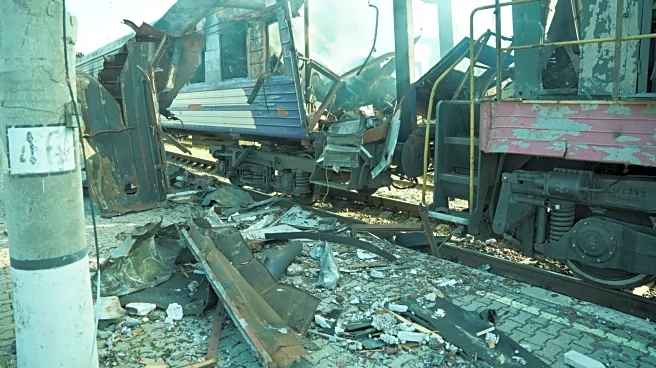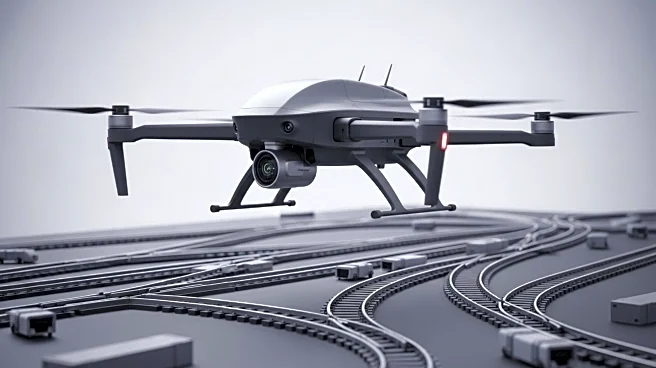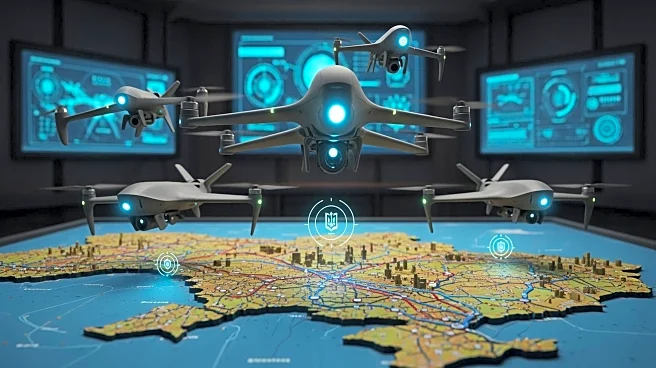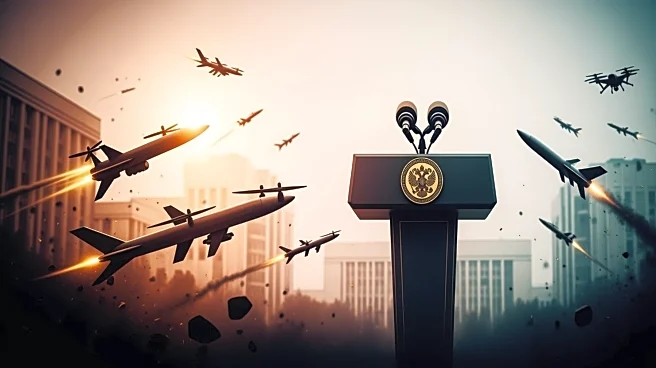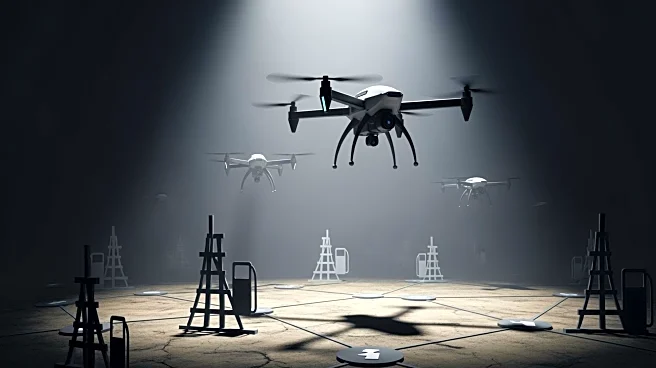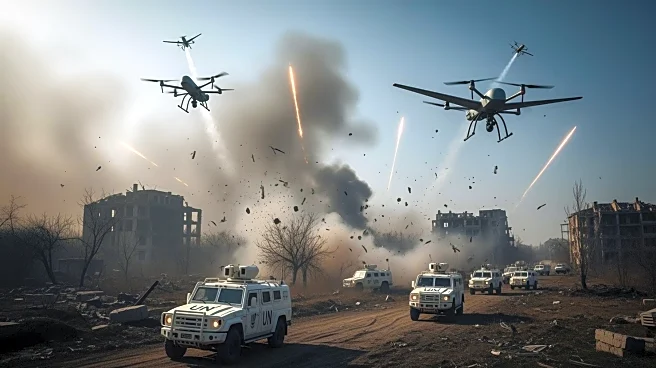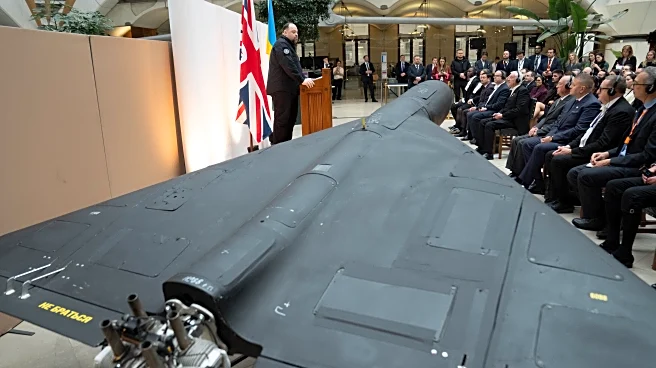What's Happening?
Russia has intensified its drone attacks on Ukraine's rail network, a critical component for commercial and military logistics. Recent strikes have been carried out with increased precision due to advancements
in long-range drone technology, including onboard video feeds. A notable attack occurred at the Shostka train station, resulting in the death of a 71-year-old man and injuries to at least eight others. Ukrainian officials report a surge in railway attacks since mid-summer, with Russia targeting infrastructure to disrupt logistics and sow unrest in border regions. The precision of these attacks has increased with the use of Shahed drones, which can target individual locomotives. Despite the challenges, Ukrainian railway crews have managed to maintain operations through rapid repairs and rerouting.
Why It's Important?
The escalation in drone attacks on Ukraine's rail network poses significant threats to the country's logistics and economy. Railways are vital for transporting freight, passenger traffic, and military aid, making them a strategic target for Russian forces. The increased precision of drone strikes could lead to severe disruptions in Ukraine's ability to move goods and military supplies, potentially impacting its economic stability and defense capabilities. The ongoing attacks highlight the evolving nature of warfare, where technological advancements in drone capabilities can significantly alter the dynamics of conflict.
What's Next?
Ukraine's railway officials and repair crews are racing to keep up with the pace of Russian strikes, ensuring that trains continue to operate despite the damage. The Ukrainian government may need to invest in enhanced counter-drone technologies and infrastructure protection to mitigate the impact of these attacks. Additionally, international support and aid could play a crucial role in bolstering Ukraine's defense against drone warfare. The situation may prompt further diplomatic efforts to address the conflict and seek resolutions to reduce hostilities.
Beyond the Headlines
The use of drones in warfare raises ethical and legal questions about the targeting of civilian infrastructure and the potential for collateral damage. The precision of drone strikes, while militarily advantageous, also underscores the need for international regulations and agreements on the use of such technology in conflict. The situation in Ukraine could serve as a case study for future discussions on the role of drones in warfare and the importance of protecting civilian infrastructure.



